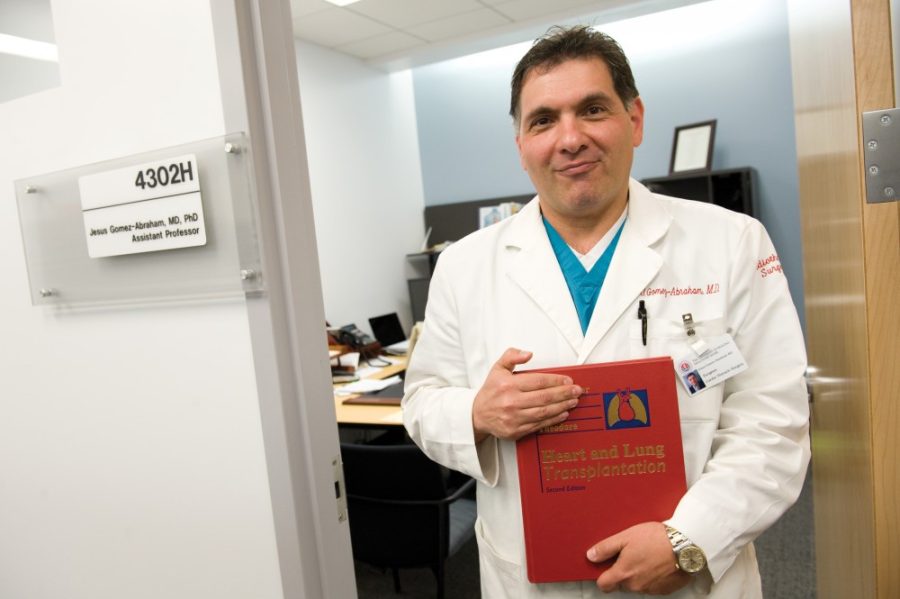The University of Arizona Medical Center is reviving its lung-transplant program after a yearlong hiatus.
The program shut down in February of 2012 after UAMC’s primary lung-transplant surgeon, Dr. Michael Moulton, left to accept an appointment as chief of cardiothoracic surgery at the University of Nebraska Medical Center. Now, with the recent hiring of Dr. Jesus Gomez-Abraham as the director of the lung and heart-lung transplant programs at UAMC, the program is being restored.
“No one else could follow in his footsteps until we recruited from the outside,” said Dr. Rainer Gruessner, chairman of the UA’s department of surgery.
An assistant professor in the UA Department of Surgery’s Division of Cardiothoracic Surgery and the surgical co-director of the Heart Transplant and Mechanical Circulatory Support programs, Gomez-Abraham said he knew he wanted to be a doctor at a young age. He was influenced by his
uncle, who was a cardiovascular surgeon, and his brother, who wanted to be a doctor at the time.
Though his brother went on to become an engineer, Gomez-Abraham stayed with his childhood goal and became a surgeon.
Early on in his anatomy classes, he knew the heart and lungs were what he wanted to work with, Gomez-Abraham said.
“It’s very difficult to live if you can’t breathe,” Gomez-Abraham said. “When you’re restricted, it’s very difficult, and it’s something you have to experience to understand.”
One of the best parts of being a surgeon is giving independence and the ability to live back to someone who can’t function on their own, he said.
“I enjoy seeing the drastic change that you can create in not only someone’s personal life, but also in their family,” Gomez-Abraham said. “How did I change the life and the family of somebody who couldn’t make it to the park with their grandchild or who couldn’t make it to the graduation with their oxygen tank?”
The UA’s team based approach to treatment and advancements in experimental technology make the transplant programs successful, he added.
“You have a … cohesive team approach. It’s multidisciplinary. It’s not just the surgeon; you have the social workers, pharmacists, the physical therapists, the rehab department,” Gomez-Abraham said. “But also we have the opportunities to develop new technologies. That’s what I think will help us in the future.”
Gruessner said that Gomez-Abraham’s passion for his patients and for transplantation is key to the success of the program.
“He is really dedicated to making transplantation the focus of his clinical work,” Gruessner said, “and that’s what we need: Someone fully dedicated to our patients.”
Nance Conney, director of transplant services, said that Gomez-Abraham’s experience and training should allow the program to pick up from where it left off.
“I hope to be able to better serve our patients in our community,” Conney said. “We’re really excited about this. We’ve had a very successful program, and we’re going to continue that.”









